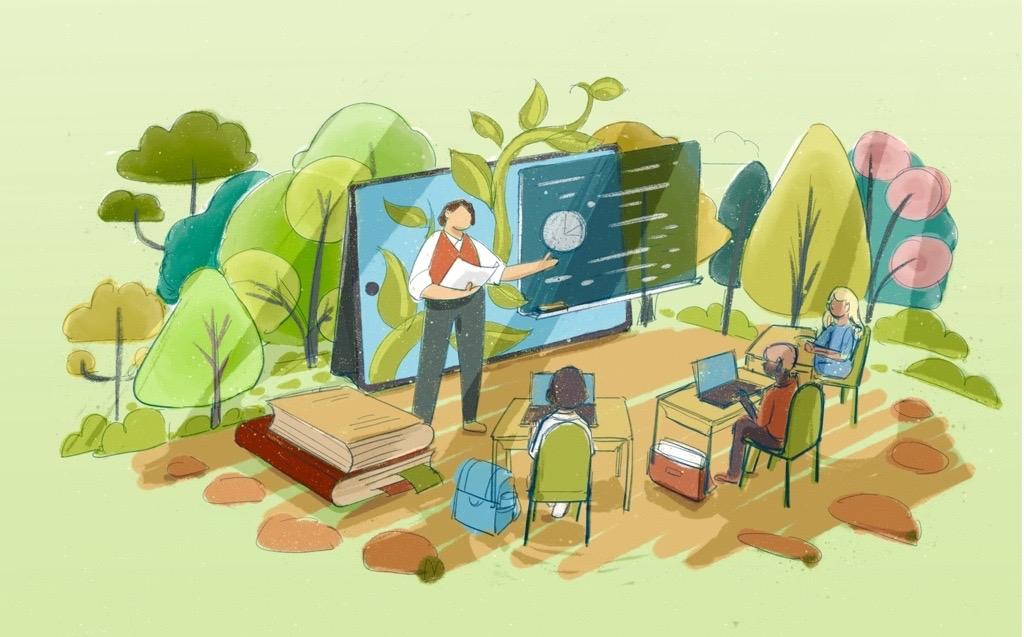Sustainable Technologies Transforming Educational Settings: Innovations for Greener Learning
In a rapidly changing world, sustainability and eco-friendliness are taking center stage across industries. Educational settings are no exception—schools, colleges, and universities are now embracing sustainable technologies to reduce their environmental impact and inspire the next generation of eco-conscious leaders. This in-depth guide explores how innovative solutions are transforming classrooms into greener, healthier, and more energy-efficient spaces.
Why Sustainable Technologies Matter in Education
Educational institutions play a crucial role in shaping our planet’s future. Incorporating sustainable technology in schools is not just about reducing energy bills; it demonstrates a commitment to environmental stewardship, provides hands-on learning opportunities, and helps meet evolving regulatory standards for green buildings. By adopting green technologies in education, schools can:
- Lower their carbon footprint
- Decrease operational costs through energy and water savings
- Create healthier indoor environments for students and staff
- integrate sustainability into the curriculum
- Set a visible example for the broader community
Top Innovations Driving Green Learning Environments
Technology is paving the way for more sustainable classrooms.Here are the leading innovations that are transforming educational settings for sustainability:
1. Solar-Powered Schools
solar panels are increasingly being installed on school rooftops and parking lots,harnessing renewable energy to power classrooms,lighting,and even entire campuses. Schools from California to India are reporting significant energy savings and sometimes even generating surplus energy to feed back into the local grid.
2. Energy-Efficient Smart Classrooms
From LED lighting and smart thermostats to IOT-based sensors that monitor room occupancy and adjust energy consumption, smart technology optimizes classroom environments and drastically reduces wasted resources. Smart building management systems also track usage patterns,enabling further improvements.
3. Eco-Pleasant Building Materials & Green Architecture
Sustainable schools are being built or renovated with eco-friendly materials such as bamboo, recycled steel, and low-VOC paints.Incorporating green roofs,abundant natural lighting,and passive solar design enhances learning spaces while minimizing the carbon footprint.
4. Digital Learning and Paperless Classrooms
Digital transformation in education enables paperless learning environments through e-books, virtual worksheets, and cloud-based collaboration tools.Platforms like Google Classroom, Microsoft Teams, and Moodle not only reduce paper waste but also streamline interaction and grading.
5. Water Conservation Technologies
Smart irrigation systems, rainwater harvesting setups, and low-flow plumbing fixtures are helping schools save water and teach students about the importance of water conservation.Interactive dashboards can display real-time water usage, fostering awareness and mindfulness.
6. Sustainable Transportation Initiatives
Many institutions are introducing electric school buses, promoting bike-to-school programs, and designing pedestrian-friendly campuses to reduce emissions from daily commutes.
7. Indoor Air Quality Monitoring
New air filtration systems and IoT-powered air quality sensors ensure that classrooms are healthy and conducive to learning. Improved air quality reduces absenteeism and enhances student performance.
Key Benefits of Sustainable Technologies in Education
-
Lower Operational Costs
Energy-efficient lighting, smart heating/cooling, and renewable energy sources lead to substantial savings on utility bills.
-
Enhanced Student Outcomes
A healthier, more cozy environment boosts student concentration, attendance, and achievement.
-
Teaching Sustainability by Example
Students witness real-world applications of eco-friendly practices, reinforcing lessons on environmental responsibility.
-
Eligibility for Green Certifications and Grants
Adopting sustainable technologies can make institutions eligible for LEED certification and government incentives.
-
Future-Proofing Facilities
Investing in sustainable infrastructure ensures schools remain resilient and adaptable to future environmental challenges.
Case Studies: Real-World Examples of Greener Learning
cranston High School West, Rhode Island
By installing a rooftop solar array, Cranston High School West reduced annual electricity consumption by 45% and involved students in analyzing real-time energy production data, integrating STEM learning with sustainability.
Singapore American School
This internationally recognized school features green roofs,sensor-controlled lighting,and rainwater harvesting. Their innovative approaches have reduced energy use by 35% and cut water consumption dramatically.
Greenschools Ireland Program
Thousands of Irish schools participate by implementing paper recycling, composting, and energy-saving campaigns. Students are empowered to lead sustainability initiatives, resulting in community-wide environmental benefits.
Practical Tips for Implementing Sustainable Technology in Your School
- Start Small: Begin with pilot projects like LED lighting or energy monitoring before scaling up investments.
- Engage the School community: Involve students, staff, and families in identifying and supporting sustainability initiatives.
- Leverage Grants and Incentives: Research local, state, and federal funding available for green school technologies.
- Measure Progress: Use dashboards and periodic audits to track resource consumption and showcase your school’s improvements.
- Train Teachers: Provide professional development focused on incorporating sustainability themes into the curriculum.
- partner with Green Tech Providers: Collaborate with companies specializing in eco-education tools, solar installation, or green architecture.
Sustainable EdTech: Digital Tools with an Environmental Twist
Educational technology (EdTech) not only enhances learning outcomes but can contribute to a more sustainable school culture. Green EdTech solutions include:
- Cloud-based collaboration (reduces hardware and paper use)
- Online homework submissions (cuts paper consumption)
- Virtual laboratories (minimizes need for consumable science supplies)
- Energy management apps (engage students in school energy monitoring)
When procuring new digital devices, prioritize energy-efficient hardware with certifications like energy Star or EPEAT, and plan for responsible e-waste management.
Overcoming Challenges: Moving Toward Greener Learning
Transitioning to sustainable educational technologies is not without its hurdles:
- Initial costs for green infrastructure can be high—but long-term savings and environmental benefits outweigh upfront expenses.
- Legacy infrastructure may require upgrades or retrofitting.
- Cultural change and staff training are essential for success.
Proactive planning, community engagement, and seeking external expertise can help schools surmount these barriers and achieve sustainable goals.
Conclusion: Building Greener Classrooms for a Sustainable Tomorrow
The future of education lies in adopting sustainable technologies—not only to lower costs and protect the environment but to foster a new generation of informed global citizens. From solar panels and smart sensors to paperless platforms and eco-friendly architecture, today’s green learning environments are setting the standard for innovation and responsibility.
By taking practical steps, celebrating successes, and making sustainability a core value, schools everywhere can transform their campuses into vibrant, eco-friendly hubs of learning. The greener the classroom, the brighter the future.

